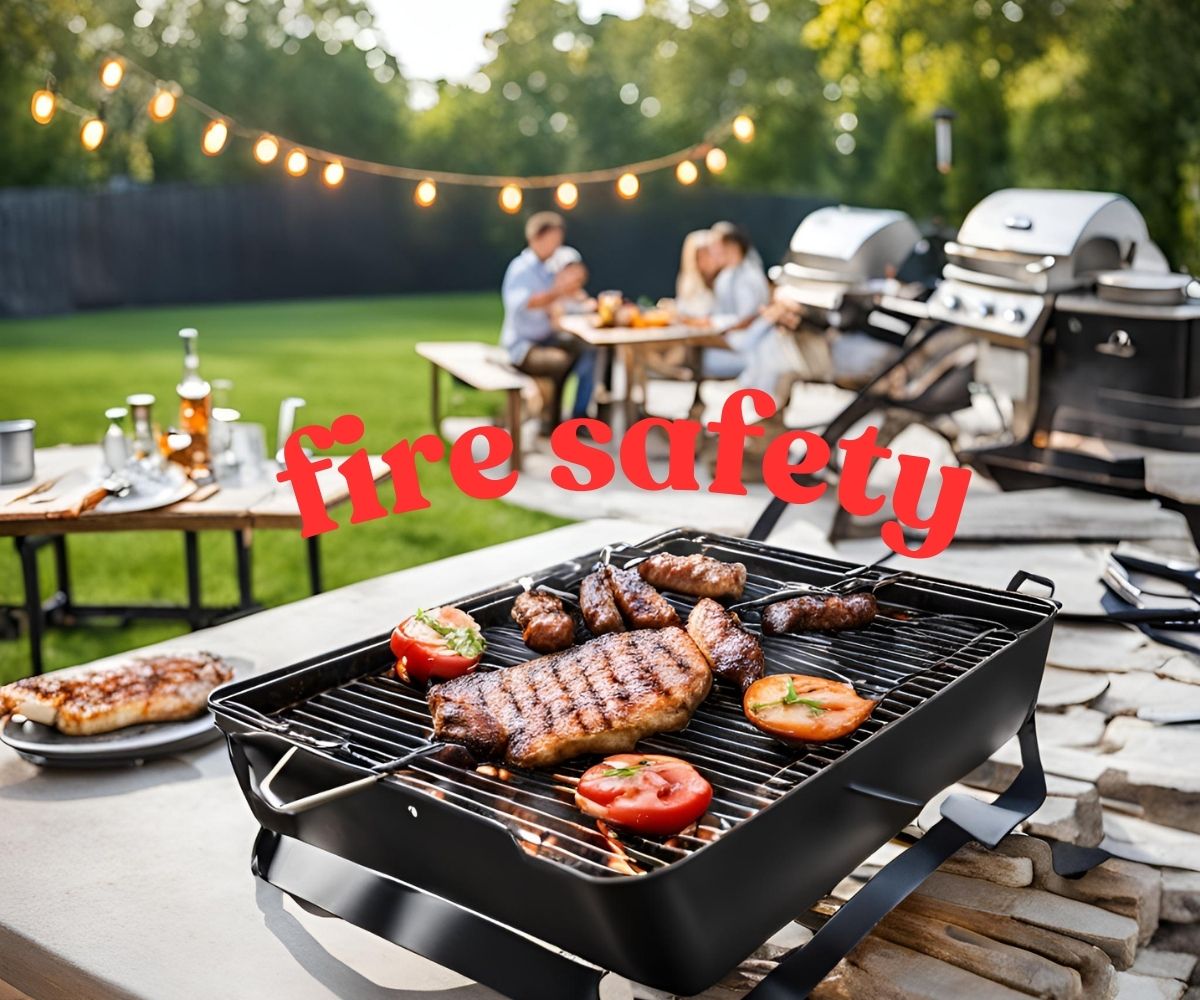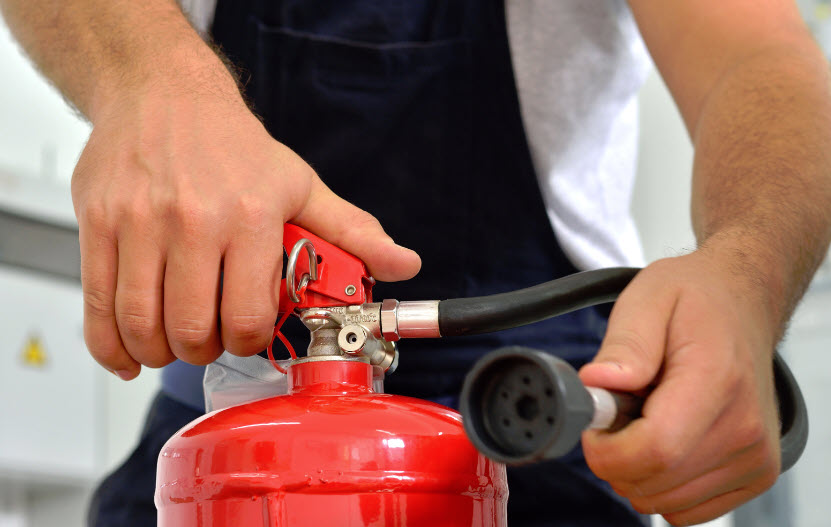You likely have a first aid kit at home with essential supplies for handling minor issues until professionals can arrive. You probably also have smoke alarms installed. But have you considered what else should be part of your fire safety kit?
Exploring the range of items available from fire safety equipment suppliers reveals several valuable additions for your home. Among the most crucial are an escape route plan and home fire extinguishers. An escape plan details how to safely exit the house from any room. Since you can’t predict where a fire might start, having two exit routes from each room increases everyone’s chances of getting out safely.
Equally important is the fire extinguisher, which can help you manage a small blaze or create a temporary path through a larger one. However, there are various types of extinguishers available, each designed for different kinds of fires. Understanding these differences and knowing where to place each type in your home can make all the difference in an emergency.
Key Points on Home Fire Extinguisher Types & Placement
Types of Fire Extinguishers
- Type A:
- Contains water.
- Suitable for traditional combustible materials like wood and paper.
- Type B:
- Typically foam-based.
- Effective against chemical fires, including kitchen chip pan fires.
- Type C:
- Uses powder.
- Designed to combat electrical fires, reducing the risk of electric shock.
- ABC Extinguishers:
- Multi-purpose extinguisher with powder.
- Capable of handling all three types of fires (A, B, and C).
- Considered the best all-round option for home use.
Strategic Placement of Fire Extinguishers in Homes
- Multiple Locations:
- Ideally, place one extinguisher in every room for maximum accessibility.
- If budget constraints exist, aim for at least two extinguishers per level of your home.
- Place them at opposite ends to minimize the distance to an extinguisher during an emergency.
- Mount on wall so everyone can see it – putting it under the sink or in a cabinet maybe hard to find.
- High-Risk Areas:
- Kitchen: Prone to grease and electrical fires; consider a Type B or ABC extinguisher.
- Garage: Often contains flammable materials; an ABC extinguisher is ideal.
- Bedrooms and Living Areas: Ensure easy access from sleeping and common areas to quickly respond to any fire incidence.
Practical Tips for Businesses
- Fire Risk Assessment:
- Conduct a thorough fire risk assessment to determine the most vulnerable areas.
- Choose extinguishers based on the specific fire risks identified in different parts of the business premise.
- Compliance with Regulations:
- Ensure compliance with local fire safety regulations regarding the type and placement of fire extinguishers.
- Regularly service and maintain extinguishers to ensure they are operational when needed.
- Accessibility:
- Install extinguishers in easily accessible locations, such as near exits and along escape routes.
- Clearly mark the locations of fire extinguishers with visible signage.

BBQ Fire Extinguisher Safety and Placement
- Choose the Right Type:
- Opt for a Class B fire extinguisher, as it is suitable for flammable liquids such as grease and cooking oils.
- Consider having a multipurpose (Class ABC) extinguisher for broader coverage, including electrical fires.
- Proper Placement:
- Place the extinguisher within easy reach but at least 5-10 feet away from the BBQ to avoid being caught in the fire.
- Ensure it is not too far away to be quickly accessible in an emergency.
- Keep it in a shaded, cool area to prevent overheating and potential damage to the extinguisher.
- Visibility and Accessibility:
- Make sure the extinguisher is visible and easily accessible at all times, even when the BBQ area is crowded.
- Avoid placing it behind objects or in areas where it could be obstructed or difficult to reach.
- Regular Maintenance:
- Check the extinguisher regularly to ensure it is fully charged and in good working condition.
- Inspect the pressure gauge to confirm it is in the green zone.
- Replace or service the extinguisher according to the manufacturer’s guidelines or after any use.
- Usage Training:
- Ensure everyone who uses the BBQ knows how to operate the fire extinguisher.
- Familiarize yourself and others with the PASS technique: Pull the pin, Aim at the base of the fire, Squeeze the handle, and Sweep side to side.
- Safety Precautions:
- Never leave the BBQ unattended while in use.
- Keep a bucket of sand or a garden hose nearby as additional safety measures.
- Regularly clean the BBQ to prevent grease build-up, which can be a significant fire hazard.
By following these safety and placement tips, you can enjoy your BBQ with greater peace of mind, knowing you’re prepared to handle any fire emergencies effectively.
Additional Safety Measures
- Escape Route Plan:
- Have a well-defined escape route plan from every room in the house or business.
- Ensure there are two available exit routes from each room to increase the chances of safe evacuation.
- Regular Drills:
- Conduct regular fire drills to ensure everyone knows the escape routes and how to use fire extinguishers.
- First Aid Kit:
- Keep a first aid kit readily available to handle minor injuries until professional help arrives.
Remember, while fire extinguishers are crucial for tackling small fires, the primary goal should always be the safe evacuation of all occupants. If the fire becomes uncontrollable, evacuate immediately and call the fire department. Remember, once you’ve got out of a burning house, stay out; and never stop for personal possessions.
Reduced Property Damage
Portable fire extinguishers are highly effective in controlling small fires. When used correctly, they can control 95% of incidents, significantly reducing the extent of property damage. Reports indicate that properties equipped with extinguishers tend to experience much lower losses compared to those without.
Statics on Lives Saved
Fire extinguishers play a crucial role in saving lives. On average, portable fire extinguishers are credited with saving around 5,000 lives annually in the United States. Additionally, proper use of these devices helps prevent tens of thousands of injuries each year.
Business Continuity
For businesses, having accessible fire extinguishers can be the difference between recovery and permanent closure after a fire incident. Statistics show that nearly 60% of small businesses do not reopen after a major fire; however, those with fire extinguishers have a higher likelihood of resuming operations quickly.
Efficacy in Different Environments
In residential settings, surveys reveal that 82% of individuals successfully contain fires using extinguishers. In commercial environments, properly placed and maintained extinguishers effectively control fires in 88% of incidents, helping to minimize extensive damage and disruption.
These statistics highlight the critical importance of having well-placed and regularly maintained fire extinguishers in both homes and businesses. Proper placement not only reduces property damage but also plays a pivotal role in saving lives and ensuring the continuity of business operations.
Emphasis on Proper Placement of Fire Extinguishers
In conclusion, the strategic placement of fire extinguishers is essential for effective fire safety in both homes and businesses. By positioning extinguishers in high-risk areas such as kitchens, garages, and near exits, you ensure quick access during an emergency, which can significantly reduce property damage and save lives. For businesses, compliance with fire safety regulations and regular maintenance of extinguishers are crucial steps that enhance overall safety and operational resilience.
Remember, while fire extinguishers are vital tools for controlling small fires, the primary focus should always be on safe evacuation. Training household members and employees on the proper use of extinguishers and familiarizing them with escape routes can further bolster fire safety measures. Ultimately, well-placed fire extinguishers, combined with a robust fire safety plan, provide peace of mind and protection against the devastating effects of fire.


